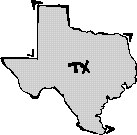
Driving through Texas, drivers
pass through hundreds of small towns. To the naked eye, their historical value
is not seen. But if visitors stop to talk with with the people in those towns,
they will find just how much history is embedded in each of them. Some of the
towns are more than 150 years old.
Currently, there are 24 towns listed on this Web site including Natalia, Devine, Lytle, Fredericksburg and Thelma. There is a detailed account of each town’s history, economy, prominent residents and photos of important people and places.
In a message on his Web site, Hines wrote, “As a teacher, I have come to understand the importance of personalizing the teaching of history to students. The mere rendition of names and dates is not only dull; it fails to engage students in the learning process. My goal is to involve students in a more personal way by ‘doing’ history.”
Students in Hines’ classes do this project each semester. Currently, several more towns are being researched to be added onto the Web site.
In the Fall of 2000, Jesus Reyes Jr. researched the town of Thelma, which is just south of PAC. Thelma is a very special town to Reyes. His ancestors were there long before the town even had a name.
“Most people like to talk about historic sites and its events,” Reyes wrote. “You will hear most stories that are great stories, but there is one that will no longer be ignored.”
Another person who is vital to this project is the Assistant to the Library Web Master, Lana Rodriguez. Rodriguez works with Hines and his students in putting all the information of each town into the computer.
A lot of work has gone into this Web site. The research is very in depth. Two students usually work on a town, but some were researched by only one student. Students must follow several steps to complete the research of a town.
First, the students must submit a six to ten page essay on the history, economy and the local culture of a small community. Hines also requires an annotated bibliography describing the usefulness of the source. A minimum of ten sources is required for each town. At least two of the sources must be interviews with people who are familiar with the town’s history.
The last requirement is that 20 photographs go along with the essay. The pictures should be of interesting historical sites in the town such as landmarks, government buildings and cemeteries.
This Web site will begin to expand this summer. During May and June, Hines and Rodriguez will load the towns that were researched this past semester onto the Internet.
Hines acknowledges because of the amount of information on each town, posting on the Internet will take time.